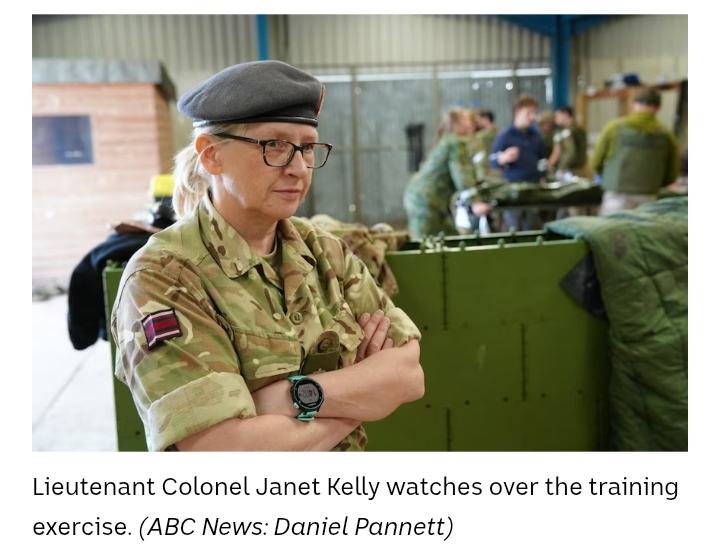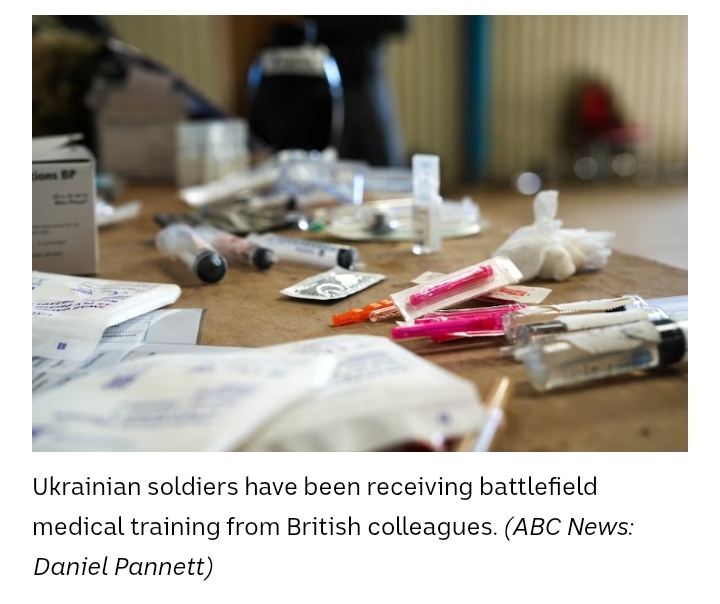NEWS
Just in:Ukrainian Troops Warn: A Ceasefire “Won’t Work with the Russians”…Read More.

Just in:Ukrainian Troops Warn: A Ceasefire “Won’t Work with the Russians”…Read More.
As the war in Ukraine enters its fourth year since Russia’s full-scale invasion in February 2022, the prospect of a ceasefire has become a topic of intense debate among military leaders, policymakers, and soldiers on the ground. Recent sentiments from Ukrainian troops, voiced during training programs and interviews, cast serious doubt on the feasibility of a truce with Russia. Many frontline soldiers argue that any ceasefire would be temporary at best, given Russia’s track record of violating agreements and pursuing its objectives regardless of diplomatic efforts. This article explores the perspectives of Ukrainian troops, the historical context of ceasefire attempts, and the broader implications for the ongoing conflict as of April 7, 2025.
Voices from the Frontline
Ukrainian soldiers, hardened by years of combat, have expressed skepticism about ceasefire negotiations currently under discussion. One soldier, identified only as Jimmy during a battlefield medicine training course in the United Kingdom, told ABC News that such talks are futile. “It won’t work with the Russians,” he said. “They will not stand for a ceasefire, they will not follow anything, they will do only what they want.” At 38 years old, Jimmy has witnessed the relentless nature of the conflict firsthand, likening it to “playing Russian Roulette” where survival hinges on luck rather than strategy or diplomacy.
This sentiment is not isolated. Reports circulating on platforms like X echo similar concerns, with Ukrainian troops estimating only a 30% to 40% chance of a ceasefire holding, based on the current frontline dynamics. Soldiers argue that Russia’s military posture—marked by continued offensives and a refusal to cede occupied territories—undermines any hope of a meaningful pause in hostilities. For these troops, the war’s resolution lies not in negotiation rooms but on the battlefield, supported by increased aid from Western allies in the form of air defenses, missiles, and weapons.
A History of Broken Promises
The skepticism among Ukrainian troops is rooted in historical precedent. Since the conflict in eastern Ukraine began in 2014, following Russia’s annexation of Crimea, multiple ceasefire agreements have been brokered—and subsequently shattered. The Minsk agreements, signed in 2014 and 2015, aimed to halt fighting between Russian-backed separatists and Ukrainian forces in the Donbas region. Despite international backing, both sides accused each other of violations, and the accords failed to stop the violence, which claimed over 14,000 lives before the full-scale invasion escalated the crisis.
Russia’s actions since 2022 have only deepened this mistrust. Ceasefires proposed during the early stages of the invasion, including humanitarian pauses to allow civilian evacuations from cities like Mariupol, were repeatedly undermined by continued shelling and blockades. For Ukrainian soldiers, these experiences reinforce the belief that Russia uses ceasefire talks as a tactical ploy—to regroup, rearm, and resume offensives—rather than a genuine step toward peace.
The Current Context
As of April 2025, the war shows no signs of abating. Russia controls roughly 18% of Ukraine’s territory, including parts of the eastern and southern regions, while Ukrainian forces have made gains in some areas through counteroffensives supported by Western military aid. Ceasefire discussions have gained traction in recent months, driven by a “coalition of the willing” led by the UK and France, which meets weekly to explore diplomatic solutions. Yet, the battlefield reality complicates these efforts. Ukrainian troops report that Russian forces remain aggressive, fortifying their positions rather than signaling a willingness to de-escalate.
For soldiers like Jimmy, the solution lies in bolstering Ukraine’s military capacity rather than banking on Russia’s goodwill. “More supplies, more air defenses, more missiles, more weapons—it’s the only way to win the war,” he emphasized. This aligns with broader calls from Kyiv for unrestricted access to long-range weapons and permission to strike targets inside Russia, a contentious issue among NATO allies wary of escalation.

International Perspectives
The international community remains divided on how to approach the conflict. British paramedic Lance Corporal Liam Webb, who trains Ukrainian soldiers in the UK, expressed enthusiasm for a potential peacekeeping role if a ceasefire were secured. “I’d be happy to go and support my colleagues and our partner nations in [Ukraine’s] fight,” he told ABC News. His optimism contrasts sharply with the Ukrainian troops’ pessimism, highlighting a disconnect between Western hopes for diplomacy and the gritty realities faced by those on the ground.
Meanwhile, Russia’s leadership has signaled little interest in compromise. President Vladimir Putin has repeatedly framed the war as an existential struggle, tying his political legacy to territorial gains and the neutralization of Ukraine as a sovereign, Western-aligned state. This intransigence fuels Ukrainian fears that any ceasefire would merely serve as a stepping stone to renewed aggression.
The Human Cost and Strategic Stakes
The human toll of the war underscores the urgency of finding a resolution, even as troops question its feasibility. Over 500,000 soldiers and civilians are estimated to have been killed or wounded since 2022, with millions more displaced. Ukraine’s infrastructure lies in ruins, and Russia’s economy strains under sanctions, yet both sides remain locked in a grueling stalemate.
Strategically, a ceasefire could reshape the conflict’s trajectory. For Ukraine, a pause might allow time to rebuild defenses and secure more aid, but it risks freezing the frontlines in a way that legitimizes Russia’s occupation. For Russia, a truce could ease domestic pressure and provide breathing room to replenish depleted forces. Ukrainian troops, however, see this as a false hope, arguing that Russia would exploit any lull to strengthen its grip on captured territories.
Looking Ahead
As ceasefire talks continue, the voices of Ukrainian soldiers serve as a sobering reminder of the challenges ahead. Their warnings—that Russia cannot be trusted to honor a truce—reflect not just battlefield fatigue but a deep-seated understanding of their adversary’s intentions. For these troops, the war is a fight for survival, one that diplomacy alone cannot resolve without decisive military support from the West.
On April 7, 2025, the prospect of peace remains elusive. While international coalitions push for dialogue, the men and women on Ukraine’s frontlines brace for a conflict they believe will persist until one side achieves a definitive victory. Whether that victory comes through force of arms or a breakthrough at the negotiating table, the stakes for Ukraine—and the world—could not be higher.












